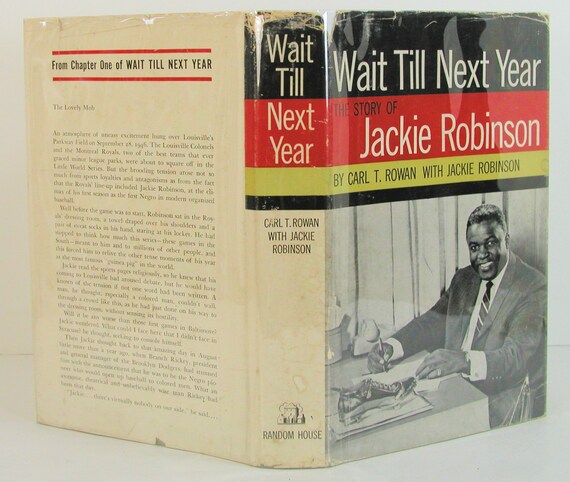How Parents and
Grandparents Can Help their Reluctant Reader be a
Joyful Reader
14 Low Tech, Common
Sense, Old School Tips & Career Suggestions
by
Willette Coleman ©2019
 | |||
| The author shares techniques she has used and personal anecdotes that reveal much about reluctant readers |
Last 3
of 14 “CAN DO” Suggestions
See suggestions 1 through 7 in PART 1.
See suggestions 8 through 11 in PART 2.
12. STEM (Science, Technology, Engineering, Math) or STEAM (Science, Technology, Engineering, Arts, Math) programs go a loooong way in organically encouraging reluctant readers to read, while stimulating their imagination and creativity. STEM and STEAM (I prefer STEAM because of the “Arts” component.), essentially, are Project Based Learning (PBL), hands-on initiatives that encompasses a high degree of sensory processing – from reading, visualization, math and coding, to taking notes from information given by an instructor or a teacher, books, videos and the Internet - all of which facilitates meaningful, actively engaging and iterative learning.
·
Parents and grandparents can inquire
whether the school their reluctant reader attends offer either of these
programs – in school or after school -
which can inspire reluctant readers to
aspire to be innovative inventors. For example, students in Maryland’s
Prince George County designed and engineered unique sports
gear for their classmates with disabilities. (See types of engineers here.) Virginia Tech graduate, Ginai
Seabron chose a STEM/STEAM-related career in nanoscience. Two outstanding STEM programs are WiseYoungBuilders.org, in Washington, DC and MetroStemWarriors.org, in Maryland.
Berkeley, California has Girls Garage, a design and building program
for girls 9 to 17.
·
Parents, grandparents and their
reluctant reader can watch STEM or STEAM programs on Public Broadcasting Stations’ (PBS) Dragonfly-TV and Xploration Station’s natureknowsbest.com. These shows kindle curiosity and “spark joy” in reading. In a dragonfly-tv
episode, teens constructed a boat from discarded milk cartons, sat in the boat
and sat sail. It didn’t sink. In another episode,
two tween boys investigated how reducing, reusing, recycling
helps the environment.
·
Parents, grandparents and reluctant
readers can find a broad selection of STEM and STEAM activities and books here. Also, thousands of college scholarships
are available for high school students focusing on STEM/STEAM careers.
13. Encourage writing.
Parents and grandparents can take helping
their reluctant reader be a joyful reader a step further by ~
·
Searching
for outlets where their reluctant reader can
post or publish a book
review after finishing a book. Numerous platforms include goodreads.com
and/or online book retailers; their high school print or online
newsletter or newspaper;
her or his twitter account. Writing
reviews about books could motivate a reluctant reader to go ahead and
read the book on the “required reading list” that they didn’t want to read
(discussed in Part 1), and writing a decent (albeit
dreaded) book report. Since juveniles
have a habit of criticizing nearly every little thing, their review could
discuss “Why I don’t like this book.” At least they would have read it.
·
Reluctant readers can create an online magazine or an online book club where subscribers or
members in their age group can post their own book reviews, as well as exchange
opinions through comments.
·
Journaling or Poetry. Parents and grandparents can encourage their reluctant reader to keep a journal of things going on in
his or her life or feelings, or write
poems, or both. Journaling could
lead to a career in journalism. For example, if your reluctant reader has an
interest in the culinary industry, he or she might consider food
journalism (also called “food critic”) and wine journalism. Here is a list
of some, but not all, such as finance
journalism (for which there are internships),
of the different types of journalism careers.
How
to Become a Financial Writer offers insight into this career. Another option is a career as a copywriter.
Parents and grandparents can inquire about after-school writing and
poetry programs in their town or city. Washington, DC
has Split this Rock and Writopia.
·
Parents and grandparents can assign their reluctant reader to document family vacations and events
(e.g., family reunions, weddings, etc.) and write captions (descriptions) to accompany photos. Who knows, maybe a photojournalist
career would interest them.
·
Speaking of family, parents and
grandparents can introduce their reluctant
reader to genealogy.
The process
– exposure to the forms and charts needed for family history research – helps reluctant
readers understand the terminology/vocabulary, concepts and significance of
learning about their Ancestors, thus, increasing their background knowledge. Familysearch.org
and Familytreemagazine.com
guide middle and high school students in this endeavor.
Some tweens and teens might complain, “What’s the point in studying some moldy old dead relatives? What they got to do with me?” Parents and grandparents can tell their reluctant reader to consider the blood running through their veins; their DNA (the carrier of genetic information). Does the reluctant reader do things differently from anyone in their immediate family? If so, could that trait have been passed down from a “moldy old dead relative”? Parents and grandparents can tell reluctant readers that “Genealogy is more than just tracing your family tree, it is about
- discovering your heritage,
- creating a story about your family,
and possibly even
- creating a medical history and can
- take you through time and across
continents.”
Reluctant readers will
- learn how their Ancestors managed
some of the same, even worse, difficulties (i.e., safety, getting enough food,
disease, etc.) they (the reluctant reader) face today;
- learn something from their Ancestors’
strengths and weaknesses; does the reluctant reader have similar strengths and
weaknesses?
- compare their Ancestors’ social and
political environment with the current environment. Parents and grandparents can ask their
reluctant reader: “When your Ancestors
lived, was air quality better than it is now?” If yes, “Why? How is it different? What happened that made it different?”
This activity might lead a reluctant reader to a career in genetic genealogy and genealogy research for which no formal education is required but a degree, such as in family history, is always helpful. Genealogists are generally required to get certification at the Board for Certification for Genealogists. The field yields plenty of internships such at the Department of Labor’s application for recent graduates. Parents, grandparents and reluctant readers can also get helpful information at How to Become a Professional Genealogist.
·
Blogging. Any of the above activities could lead your
reluctant reader to creating a blog, which encourages reading
and writing. Teachmama.com
provides a step-by-step guide for adolescents interested in starting a blog, and
addresses safety issues.
14. Reading Space. A quiet environment is crucial to reading and focus. But, this can be a challenge for youths (and
parents) living in today’s high volume, noisy world. And, not
every home can ensure reluctant readers a quiet, well lit, comfortable
and inviting space to read.
(This is especially true where children live in homeless shelters.) Still,
·
Quiet or silence,
as Erling Kagge noted in his book, Silence:
in the Age of Noise, triggers and invites “reader reflection and is
essential to our sanity and happiness.”
Public libraries are the best public places to read in
peace and quiet, but, some libraries in some cities, like Washington, DC, are
challenged with overtly disrespectful young and adult patrons – from talking
loudly on cell phones, popping fingers and dancing to music they play (without
headsets or earbuds) on computers, to profanely and vociferously engaging in
conversations with or angrily confronting other patrons or library staff. Some people eat entire meals in DC libraries
(the DC Council relaxed the “No Eating” policy, which has opened up a can of
worms. Literally. I’ve seen people eating out of cans in the
library. It’s disgusting to sit at a
public computer where trifling people leave crumbs and sticky stuff on
keyboards and at work stations. Once
upon a time, librarians could walk up to a patron, put an index finger to her
or his lips and say “shush or sssshhhh” and monitor individuals who disregarded
library rules. Today, the chances of
being cussed out or even physically attacked are scary and real. Outlandish behavior doesn’t happen often, but
is annoying when it does. That said,
patrons and reluctant readers can reserve a conference room for an hour or more in libraries and read in peace,
away from the noisy and rude public.
“One more thing,”
as the disheveled TV detective, Columbo,
would say. Actually, three more things:
First: Parents and grandparents can remind their reluctant reader that reading not only means learning, but also “knowing.” IF YOU DON’T READ, YOU DON’T KNOW (that
catchphrase is on my t-shirt). And, knowing translates to “confidence.”
·
Parents, grandparents and their
reluctant reader can create a large graphic poster with that slogan and display
it in their reluctant reader’s room; stick “post-its” with that same slogan on
the refrigerator and kitchen cabinet doors, bathroom mirror, household
furniture; in underwear and sock drawers; on car seats and doors, bicycle,
backpacks, etc., and text the catchphrase to their reluctant reader as often as
possible.
Second: Parents and
grandparents can tell their
reluctant reader that reading enhances
other pleasures in life; makes other things they enjoy doing, better. For example, if they like listening to hip
hop, Tiffany D. Jackson’s Let Me
Hear a Rhyme, that “tells the
story of three Brooklyn teens who plot to turn their murdered friend into a
major rap star by pretending he is still alive,” would be a cool, non-boring read they could talk about to
friends. Parents, grandparents and their
reluctant reader can find more compelling hip hop novels here.
Third: Reading books can be therapeutic. Medical doctors in Wales write 30,000 book
prescriptions a year to treat mild to moderate depression. Book
therapy, in war-torn Syria
where adversaries drop U.S.
bombs and shoot automatic weapons destroying lives and homes, is helping to heal
survivors, mentally and emotionally. Despite
the devastating heartbreak from losing family members and friends, Syria’s
Secret Library reported that remaining residents mustered up the fortitude to
search through the rubble, like archeologists, and salvage thousands of books. Then, they set up a library in the basement of
a building where the upper floors had been bombed to pieces. AWESOME!!!
Book Therapy! Just what every frustrated middle and high
school reluctant reader needs.
PARENTS
and GRANDPARENTS CAN ALSO READ:
How
to Raise a Reader, by Pamela Paul and Maria Russo, helps parents instill a
lifelong love of books - from birth to teens.
Pre-teens and teens might enjoy
The
Mystery of the Underground Railroad,
by Carole Marsh
Double Dutch, juvenile “secrets,”
by Sharon M. Draper
The Girl Who Drank the Moon, ghost
story, by Kelly Barnhill’s
Freak Show, teen to the rescue, by Kristopher McClendon
Freak Show, teen to the rescue, by Kristopher McClendon
Have more suggestions for busy parents
and grandparents to help a reluctant reader be a joyful reader? Please share.
Magic, Miracles & Blessings,
Willette










